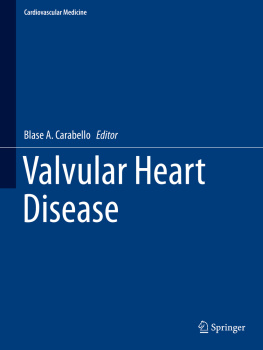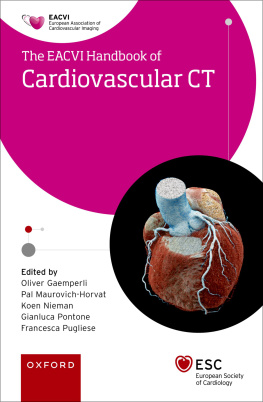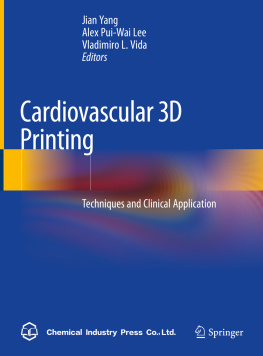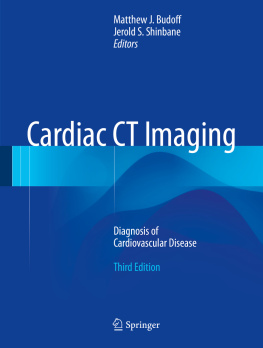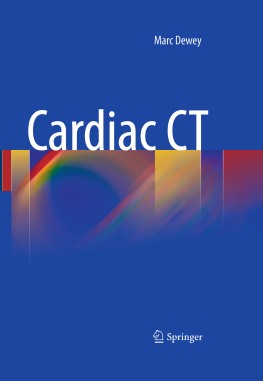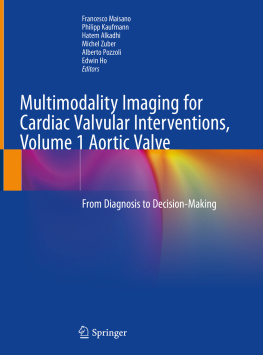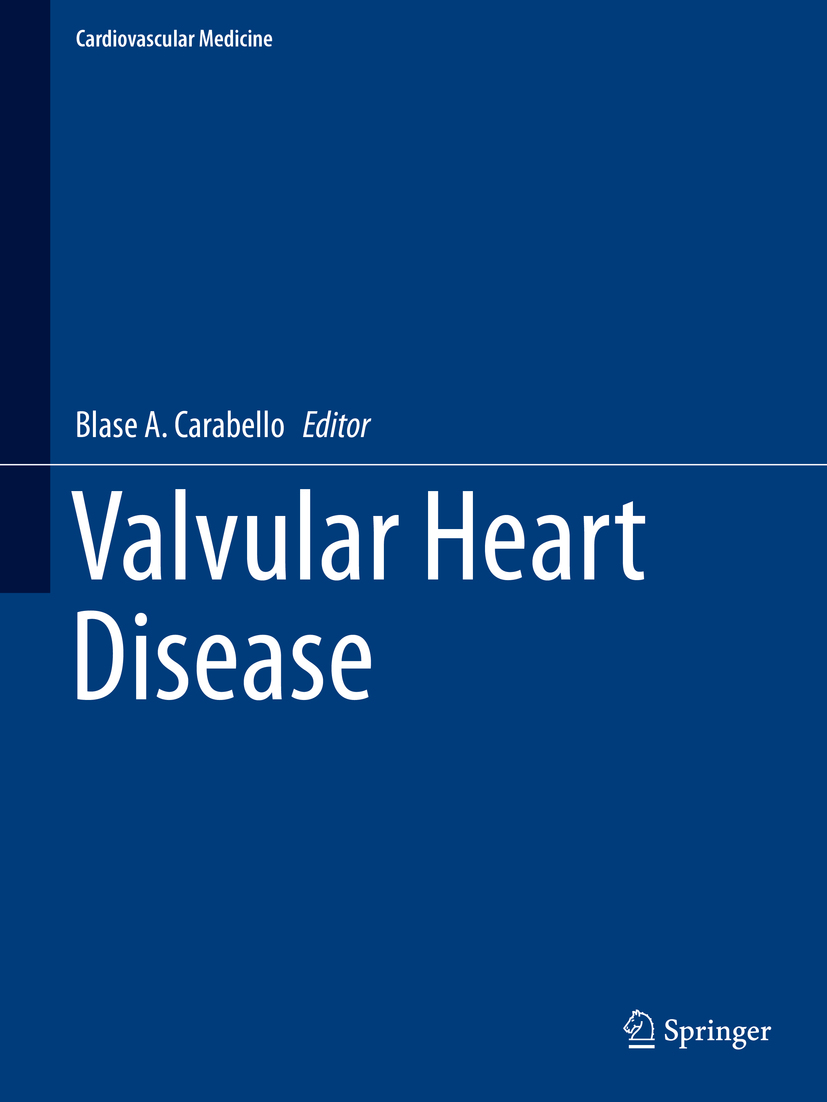Cardiovascular Medicine
Series Editor
James T. Willerson
MC 3-116, Texas Heart Institute, Houston, TX, USA
Cardiovascular Medicine will offer today's most up-to-date, user-friendly guidance on the evaluation, diagnosis, and medical and surgical treatment of heart and vascular disease and will be on the wish list for every trainee and practising cardiologist, cardiac surgeon, vascular surgeon, diabetologist, cardiac radiologist and any physician who manages cardiac patients. The book and online package is dedicated to providing comprehensive coverage of every aspect of cardiovascular medicine from cardiac signs and symptoms through peripheral vascular disease and the genetic basis for cardiovascular disease to preventive cardiology. The Editors and over 150 world authorities will offer their decades of scientific and clinical experience. A major selling point will be the consistent chapter organization, clear design, and engaging text that includes user-friendly features such as tables, lists and treatment boxes. The reader will have all the guidance to diagnose and manage a full range of conditions in a series of textbook resources, while also having access to additional video material. More than 1600 illustrations over the eight volumes including a wealth of color Doppler, nuclear imaging, surgical and pathological images clarify complex principles and help in the understanding of the subtleties of technique and their application, so that they can be implemented in your practice. The eight volumes of Cardiovascular Medicine, 4th Edition will be the premier resource of its kind, which will advance readers knowledge and stimulate further study in cardiovascular medicine. Each volume is designed as firstly as a standalone reference in its subject, breaking the field of cardiology down into logical learning modules.
More information about this series at http://www.springer.com/series/10474
Editor
Blase A. Carabello
Valvular Heart Disease
Editor
Blase A. Carabello
Brody School of Medicine, East Carolina University, Greenville, NC, USA
ISSN 2363-5053 e-ISSN 2363-5061
Cardiovascular Medicine
ISBN 978-1-4471-2839-7 e-ISBN 978-1-4471-2840-3
https://doi.org/10.1007/978-1-4471-2840-3
Springer-Verlag London Ltd., part of Springer Nature 2020
This work is subject to copyright. All rights are reserved by the Publisher, whether the whole or part of the material is concerned, specifically the rights of translation, reprinting, reuse of illustrations, recitation, broadcasting, reproduction on microfilms or in any other physical way, and transmission or information storage and retrieval, electronic adaptation, computer software, or by similar or dissimilar methodology now known or hereafter developed.
The use of general descriptive names, registered names, trademarks, service marks, etc. in this publication does not imply, even in the absence of a specific statement, that such names are exempt from the relevant protective laws and regulations and therefore free for general use.
The publisher, the authors, and the editors are safe to assume that the advice and information in this book are believed to be true and accurate at the date of publication. Neither the publisher nor the authors or the editors give a warranty, expressed or implied, with respect to the material contained herein or for any errors or omissions that may have been made. The publisher remains neutral with regard to jurisdictional claims in published maps and institutional affiliations.
This Springer imprint is published by the registered company Springer-Verlag London Ltd. part of Springer Nature
The registered company address is: The Campus, 4 Crinan Street, London, N1 9XW, United Kingdom
Preface
The field of valvular heart disease has exploded during the past decade, driven by new and exciting therapeutic options. Normally functioning heart valves permit a one-way blood flow through the heart. However, when valve malfunction occurs, it is of two types: valve stenosis, wherein narrowed valve orifices impede blood flow, and valve regurgitation, wherein valve incompetence permits backward flow. In general, the most effective solutions to these mechanical problems are also mechanical, consisting of valve repair or replacement. Until a decade ago, these mechanical solutions were performed surgically and, while quite effective, entailed all the risks of open-heart operations. The advent of transcatheter aortic valve replacement and transcatheter mitral valve repair brought innovative, simpler, and non-operative mechanical solutions to the patient, making therapy available to patients too high risk to benefit from surgery. These therapies also added cardiologists to the providers capable of providing them, initiating the heart team concept wherein a multidisciplinary group of providers worked in concert to decide on the therapy best suited to each individual patient. At the same time, these new therapies dramatically increased the complexity of the patients now able to be treated. It is in this new era of cardiology at which this text is aimed.
In this textbook, the experts in the field marry the old with the new, discussing the physical examination of the major valve lesions by which most valve diseases are discovered, emphasizing the imaging techniques (and their pitfalls) by which valve disease is assessed, and taking a balanced approach to the indications for therapy and the type of therapy indicated. It offers a broad exposure to issues connected to valve disease, including rheumatic fever, aortic root dilatation, infective endocarditis, and heart disease in pregnancy. The text is capped off by an interactive group of case scenarios, testing the readers skill in addressing complex problems confronted in the real world, often for which there is only a best therapy but no definitive right or wrong answer. Thus, the reader will be exposed not only to guideline-directed therapy but also to therapeutic decisions that must be made but which are not specifically spelled out in the currently available guidelines.
Blase A. Carabello
Greenville, NC, USA
Contents
L. Maximilian Buja
Y. S. Chandrashekhar , L. Maximilian Buja , Ganesan Karthikeyan and Jagat Narula
Tina Shah , Richard J. Hamill and Kumudha Ramasubbu
James T. Willerson and L. Maximilian Buja
Blase A. Carabello , Haziam Alwair and Rajasekhar Nekkanti
Brian R. Lindman , Spencer J. Melby , Nishath Quader , Marc A. Sintek and Marc R. Moon
Michael J. Mack and James T. Willerson
Joseph Lamelas , Corinne M. Aberle and Swaminadhan Gnanashanmugam
Blase A. Carabello and Rajasekhar Nekkanti
Sukhdeep Singh Basra , Hani Jneid and Biswajit Kar
Corinne M. Aberle , Chrisita L. Powlett and Jennifer R. Cozart
Stephanie A. Coulter , Jeanney Lew and Benjamin Jenny
Blase A. Carabello
Contributors
Corinne M. Aberle MD
Cardiothoracic Surgery, Texas Heart InstituteBaylor College of Medicine, Houston, TX, USA
Division of Cardiothoracic Surgery, Baylor College of Medicine, Baylor St. Lukes Medical Center, Houston, TX, USA

